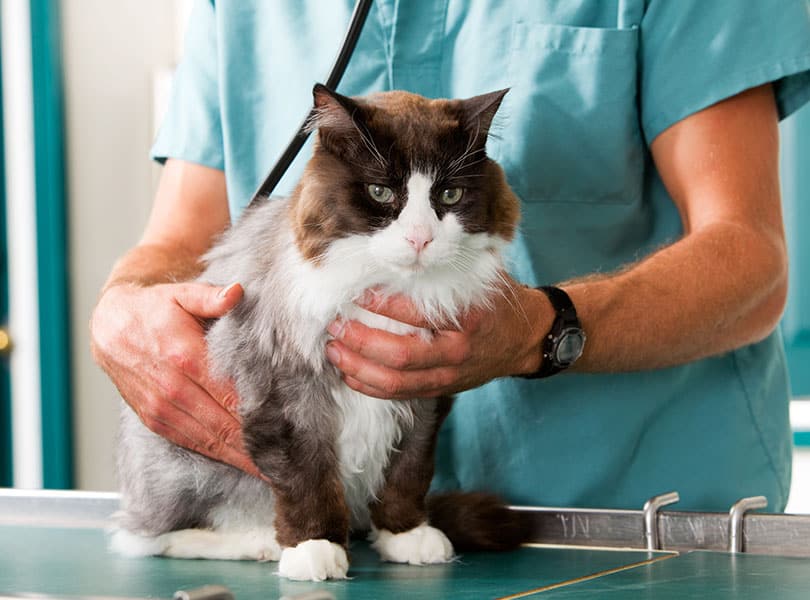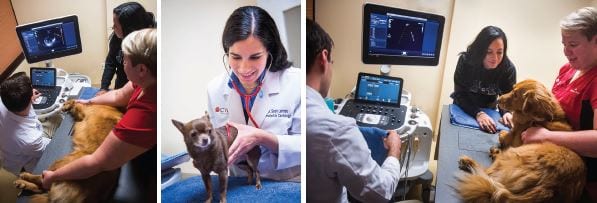How a Cancer Veterinary Near Me Can Improve Your Pet’s Quality of Life}
What You Required to Find Out About Vet Providers: A Review of Diagnostic Equipments and Procedures
Vet solutions play an essential duty in keeping the wellness of pet dogs. Routine exams can reveal covert health worries at an early stage. Different analysis tools and treatments, such as blood tests and imaging methods, provide vital understandings into an animal's health. Understanding these approaches is vital for pet dog owners. What certain analysis procedures are most generally utilized, and exactly how can they impact a pet dog's therapy plan?
Significance of Normal Vet Examinations
While several pet dog proprietors may take too lightly the significance of regular vet examinations, these consultations are essential for keeping a pet's overall health and wellness. Routine check outs to the vet enable very early detection of prospective wellness concerns prior to they escalate into serious problems. Normal examinations often consist of vaccinations, which are essential for avoiding transmittable conditions that could significantly influence a family pet's well-being. In addition, these appointments offer a possibility for veterinarians to evaluate the pet's weight, dental health, and total problem, making sure that the family pet is flourishing. Throughout these brows through, pet owners can additionally receive useful guidance on diet regimen, exercise, and preventative treatment tailored to their details pet's needs.
Usual Analysis Procedures in Veterinary Medicine
In veterinary medicine, accurate medical diagnosis is vital for effective therapy. Common analysis procedures include blood screening techniques, progressed imaging technologies, and urinalysis, each playing a considerable function in determining health and wellness problems. Understanding these techniques improves the ability to supply suitable treatment for animal people.
Blood Examining Methods
Blood testing strategies function as vital analysis tools in veterinary medication, allowing vets to examine the health and wellness of pets precisely. These strategies include accumulating blood examples to analyze numerous elements, such as white and red blood cells, platelets, and biochemical markers. Typical examinations consist of full blood counts (CBC), which assess overall health and wellness and find infections, and biochemical panels, which evaluate organ feature and metabolic status. Additionally, serological tests can determine particular conditions through antibody discovery. Blood testing is minimally invasive and offers vital information that aids in diagnosing problems, keeping track of wellness standing, and evaluating actions to therapies. In general, these strategies play an important duty in ensuring excellent look after animals and livestock alike.
Imaging Technologies Utilized
Analysis imaging technologies are important devices in veterinary medicine, enhancing blood screening methods by giving visual understandings right into a pet's interior structures. Typical imaging methods include X-rays, which work for examining bone fractures and detecting foreign things, and ultrasound, which enables real-time visualization of soft cells and body organs. Magnetic resonance imaging (MRI) uses comprehensive pictures of complicated physiological locations, specifically in neurological evaluations. Calculated tomography (CT) provides cross-sectional images, enhancing analysis precision for different problems. Each of these modern technologies help vets in detecting health problems, preparing therapies, and checking healing. By including imaging modern technologies, vet professionals can much better evaluate a pet's health and make educated decisions regarding their care.
Urinalysis and Diagnostics
Urinalysis functions as an important analysis device in veterinary medicine, supplying useful insights right into a pet's total health and wellness and assisting in the discovery of various conditions. This non-invasive procedure evaluates urine examples to examine kidney function, hydration status, and metabolic problems. Typical elements taken a look at include details gravity, pH levels, glucose, healthy proteins, and the existence of blood or bacteria. Unusual findings can suggest issues such as urinary system infections, diabetes mellitus, or kidney disease. To improve analysis accuracy, urinalysis is frequently executed together with other examinations, such as blood job and imaging researches. Early discovery via urinalysis can bring about prompt interventions, enhancing the prognosis for lots of veterinary people. Therefore, it is a vital facet of comprehensive vet treatment.
Recognizing Blood Examinations and Research Laboratory Evaluation
Understanding blood examinations and research laboratory analysis is vital in veterinary medication as it assists in identifying various wellness conditions in pets. Different kinds of blood tests offer vital details concerning an animal's inner state, while analyzing laboratory results needs careful factor to consider of many aspects. This section will discover the kinds of blood tests available and the value of their outcomes.
Sorts Of Blood Tests
Blood examinations play an essential role in veterinary medicine, providing vital insights right into a pet's health status. Numerous kinds of blood tests are utilized, each offering various functions. Total blood counts (CBC) assess total health and wellness and spot conditions such as anemia or infection. Biochemical accounts examine organ feature by determining electrolytes and enzymes, supplying insights right into metabolic health. Serological examinations determine specific antibodies or microorganisms, aiding in the diagnosis of infections or autoimmune illness. Blood inputting guarantees secure transfusions, while coagulation examinations evaluate the blood's capability to clot, important for surgeries. These tests jointly improve diagnosis, therapy planning, and monitoring of a pet's health and wellness, illustrating the value of detailed laboratory evaluation in veterinary care.

Analyzing Laboratory Results
A complete evaluation of lab outcomes is necessary for exact diagnosis and treatment in vet medication. Translating laboratory results needs an understanding of regular recommendation arrays and the value of discrepancies. Blood tests can disclose numerous health and wellness indicators, such as body organ feature, electrolyte balance, and the existence of infections. Vets should take into consideration the entire professional image, consisting of the pet's history, health examination findings, and any signs provided. Variants in outcomes might develop from aspects such as age, breed, and underlying wellness problems. Consequently, laboratory results should not be seen in seclusion however rather as part of a comprehensive diagnostic approach. Accurate interpretation enables customized treatment plans and far better end results for vet clients.
Imaging Techniques: X-rays, Ultrasounds, and Beyond
Imaging techniques are important devices in veterinary medicine, offering important insights right into the health and wellness and well-being of pets. Amongst the most frequently used techniques are Ultrasounds and x-rays. X-rays are indispensable for visualizing bone frameworks, helping vets identify fractures, growths, or foreign items. This approach is non-invasive and quick, making it ideal for urgent situations.Ultrasounds, on the various other hand, use acoustic waves to develop pictures of soft tissues and body organs. This strategy is particularly valuable for taking a look at the heart, abdominal area, and reproductive organs, allowing veterinarians to assess problems like liquid build-up or organ abnormalities.Beyond X-rays and ultrasounds, advanced imaging strategies such as computed tomography (CT) and magnetic vibration imaging (MRI) are significantly made use of in veterinary practice. These approaches offer in-depth cross-sectional images, boosting the precision of medical diagnoses and therapy plans. CT Scans For Dogs. On the whole, imaging techniques play a vital role in making sure reliable veterinary care
The Role of Biopsies in Diagnosing Pet Dog Health Issues
Precision in identifying health and wellness problems in family pets commonly depends upon using biopsies, which provide conclusive info regarding tissue irregularities. A biopsy includes the removal of a small example of cells for evaluation under a microscope, permitting vets to determine article different problems, consisting of infections, tumors, and inflammatory conditions. This analysis tool is important for distinguishing in between benign and deadly growths, directing treatment choices, and examining the severity of a condition.Biopsies can be executed utilizing different techniques, such as needle ambition, incisional biopsies, or excisional biopsies, depending upon the area and kind of cells included. The option of technique may influence healing time and the quantity of cells accumulated. Ultimately, the info gleaned from a biopsy can lead to targeted therapies, enhancing outcomes for family pets facing severe health and wellness obstacles. Vets stress the significance of this procedure in achieving precise medical diagnoses and reliable therapy plans.
Advanced Diagnostic Equipment: Endoscopy and CT Checks

Advanced diagnostic devices, such as endoscopy and CT scans, play an important function in modern vet medication, using non-invasive methods to picture interior structures and detect numerous problems in pet dogs. Endoscopy involves using a flexible tube geared up with a cam, enabling veterinarians to check out the gastrointestinal system and respiratory system directly. This technique can disclose irregularities such as tumors, foreign bodies, or swelling, allowing targeted treatment plans.CT scans, on the other hand, use innovative imaging modern technology to develop detailed cross-sectional pictures of the body (CT Scans For Dogs). This technique is particularly useful for examining facility frameworks like the brain, back, and joints. By offering high-resolution images, CT scans aid vets in recognizing issues that might not appear via conventional radiography. With each other, these advanced tools enhance analysis precision, enhance treatment results, and ultimately add to much better general pet health management

Interpreting Examination Results: What Family Pet Owners Ought To Know
Understanding test results can be a tough job for animal proprietors, specifically after advanced procedures like endoscopy and CT scans have been executed. Analyzing these outcomes calls for a grasp of clinical terminology and a clear understanding of what the searchings for suggest regarding the animal's health. Veterinarians usually give descriptions, but the complexity of next the results can still result in confusion.Pet proprietors need to proactively involve in conversations with their vets, asking questions to make clear any type of unpredictabilities. It is necessary to comprehend unusual versus typical outcomes and the implications for the pet dog's therapy strategy. Furthermore, identifying that some results may need more screening or monitoring can assist owners stay notified about their animal's health trip. Ultimately, a collaborative approach between family pet owners and veterinary specialists fosters much better health and wellness outcomes and improves the total care experience for pets.
Frequently Asked Inquiries
Just how Do I Select the Right Veterinary Center for My Pet dog?
Selecting the ideal vet clinic involves researching local options, reviewing credentials, seeing centers, and analyzing personnel communications (Board Certified Veterinary Cardiologist). Focusing on referrals from trusted sources can aid ensure the most effective care and atmosphere for a family pet's wellness requirements
What Should I Do if My Animal Refuses to visit the Vet?
When a pet declines to visit the vet, it's a good idea to stay calm, usage treats or toys to attract them, and take into consideration arranging a home see if anxiety continues. Persistence and positive reinforcement are key.
Are There Telehealth Options for Veterinary Services?
Telehealth options for veterinary services are increasingly offered, permitting animal owners to speak with vets from another location. These solutions make it possible for conversations about health concerns, recommendations on small ailments, and follow-ups without needing to visit a center.
How Commonly Should My Family Pet Have Oral Examinations?
The regularity of oral exams for animals typically depends upon their age and type. Generally, vets recommend yearly oral evaluations, although some pets may need more regular sees to keep excellent oral health.

What Are the Costs Connected With Veterinary Diagnostics?
The expenses associated with vet diagnostics can vary widely, normally varying from standard examinations like blood work to sophisticated imaging techniques. Variables affecting costs consist of the center's area, tools read the article utilized, and details tests required for each and every family pet. Vet services play a vital function in keeping the health and wellness of pet dogs. While numerous pet dog owners may take too lightly the relevance of routine veterinary examinations, these consultations are important for maintaining a pet's general wellness. Furthermore, these appointments supply a chance for veterinarians to analyze the pet's weight, dental health and wellness, and general condition, ensuring that the pet is thriving. Precision in detecting health and wellness concerns in pet dogs commonly pivots on the use of biopsies, which offer definitive info about tissue irregularities. Additionally, acknowledging that some outcomes might need more testing or surveillance can assist proprietors stay informed about their pet dog's health trip.